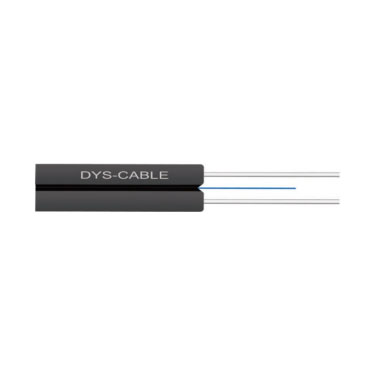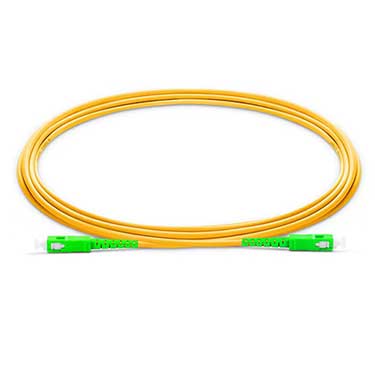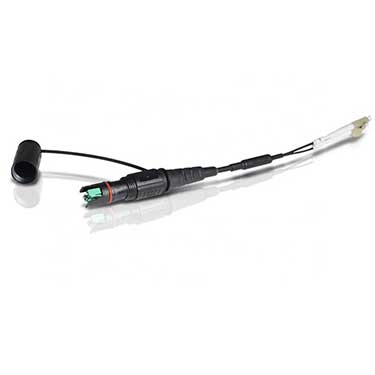How Does Fiber to the Home Work?
Fibre to the Home (FTTH) is a technology that enables high-speed internet connections directly to individual homes or businesses by using fiber optic cables. Here is how it works:
Fiber optic cables are laid underground or on telephone poles to carry data signals.
A network terminal is installed in the neighborhood or a central location. This terminal acts as a gateway for the fiber optic cables and connects to the internet backbone.
From the network terminal, fiber optic cables are run directly to individual homes or businesses, terminating at a small box called an Optical Network Terminal (ONT).
The ONT translates the optical signals into electrical signals that can be used by your devices such as a router or computer.
A router can then be connected to the ONT to distribute the internet connection throughout the home or business.
FTTH offers faster and more reliable internet speeds compared to traditional copper wire connections because fiber optic cables can transmit data over long distances with minimal loss of signal strength. This technology is becoming more common as demand for high-speed internet continues to grow.
What is the Difference Between Broadband and FTTH?
Broadband and FTTH (Fiber to the Home) are both technologies used to provide high-speed internet connectivity, but they differ in the way they transmit data.
Broadband refers to any high-speed internet connection that uses a transmission technology capable of transmitting data at a rate of at least 25 Mbps (megabits per second). Broadband connections can be delivered through various technologies such as DSL (Digital Subscriber Line), cable, or satellite.
FTTH, on the other hand, is a specific type of broadband connection that uses fiber optic cables to transmit data. This means that instead of using traditional copper wires or coaxial cables, FTTH delivers internet directly to a home or business using fiber optic cables that transmit light signals to transmit data.
The main difference between broadband and FTTH is that broadband can use different types of transmission technologies, while FTTH specifically uses fiber optic cables to transmit data. FTTH generally provides faster and more reliable internet speeds compared to other broadband technologies, making it a popular choice for high-bandwidth applications such as online gaming, video streaming, and remote work.
Fiber to the Node vs Fiber to the Home
Fiber to the Node (FTTN) and Fiber to the Home (FTTH) are both types of fiber optic internet connections, but they differ in the way they deliver the internet to the end-user.
FTTN is a type of broadband connection that brings fiber optic cables to a central node or cabinet in a neighborhood, and then uses existing copper or coaxial cables to deliver the internet to individual homes or businesses. The final connection between the node and the end-user is usually through DSL or cable technology.
FTTH, on the other hand, provides a direct fiber optic connection to the end-user's home or business, bypassing the need for copper or coaxial cables. With FTTH, a fiber optic cable runs from the internet service provider's central office all the way to the end-user's home or business, terminating at an Optical Network Terminal (ONT) that converts the fiber optic signals to an Ethernet signal.
The main difference between FTTN and FTTH is the distance that the fiber optic cable travels before being converted to an electrical signal. FTTN has a shorter fiber optic cable run than FTTH, and then uses copper or coaxial cables to complete the connection, while FTTH delivers the internet directly to the end-user over a longer fiber optic cable run.
FTTH generally provides faster and more reliable internet speeds compared to FTTN, as there is less signal loss and interference over a direct fiber optic connection. However, FTTN can still provide faster speeds than traditional copper or cable connections, making it a more cost-effective option for some service providers.
Fiber to the Curb vs Fiber to the Home
Fiber to the Curb (FTTC) and Fiber to the Home (FTTH) are both types of fiber optic internet connections, but they differ in the way they deliver the internet to the end-user.
FTTC is a type of broadband connection that brings fiber optic cables to a cabinet or node located near the end-user's home or business, typically within a few hundred feet or a block away. From there, the connection is completed using existing copper or coaxial cables. The final connection between the node and the end-user is usually through DSL or cable technology.
FTTH, on the other hand, provides a direct fiber optic connection to the end-user's home or business, bypassing the need for copper or coaxial cables. With FTTH, a fiber optic cable runs from the internet service provider's central office all the way to the end-user's home or business, terminating at an Optical Network Terminal (ONT) that converts the fiber optic signals to an Ethernet signal.
The main difference between FTTC and FTTH is the distance that the fiber optic cable travels before being converted to an electrical signal. FTTC has a shorter fiber optic cable run than FTTH, as the connection is completed using existing copper or coaxial cables for the final connection. With FTTH, the fiber optic cable runs all the way to the end-user's home or business, providing a direct fiber optic connection.
FTTH generally provides faster and more reliable internet speeds compared to FTTC, as there is less signal loss and interference over a direct fiber optic connection. However, FTTC can still provide faster speeds than traditional copper or cable connections, making it a more cost-effective option for some service providers.

 EN
EN




